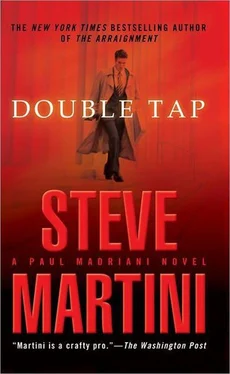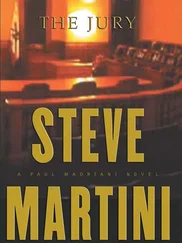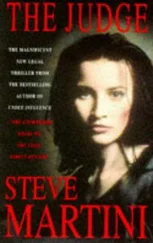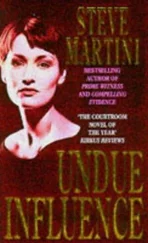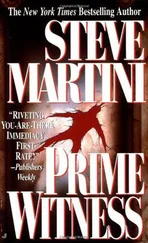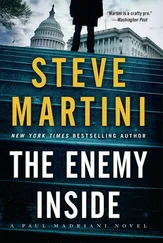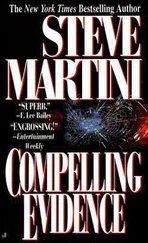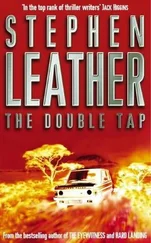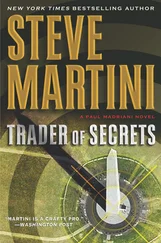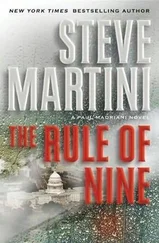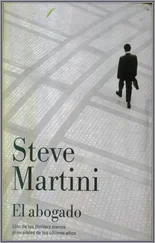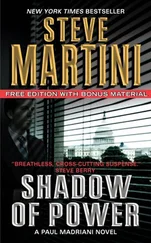Steve Martini - Double Tap
Здесь есть возможность читать онлайн «Steve Martini - Double Tap» весь текст электронной книги совершенно бесплатно (целиком полную версию без сокращений). В некоторых случаях можно слушать аудио, скачать через торрент в формате fb2 и присутствует краткое содержание. Год выпуска: 2014, ISBN: 2014, Издательство: Jove, Жанр: Триллер, на английском языке. Описание произведения, (предисловие) а так же отзывы посетителей доступны на портале библиотеки ЛибКат.
- Название:Double Tap
- Автор:
- Издательство:Jove
- Жанр:
- Год:2014
- ISBN:9781101550229
- Рейтинг книги:4 / 5. Голосов: 1
-
Избранное:Добавить в избранное
- Отзывы:
-
Ваша оценка:
- 80
- 1
- 2
- 3
- 4
- 5
Double Tap: краткое содержание, описание и аннотация
Предлагаем к чтению аннотацию, описание, краткое содержание или предисловие (зависит от того, что написал сам автор книги «Double Tap»). Если вы не нашли необходимую информацию о книге — напишите в комментариях, мы постараемся отыскать её.
Double Tap — читать онлайн бесплатно полную книгу (весь текст) целиком
Ниже представлен текст книги, разбитый по страницам. Система сохранения места последней прочитанной страницы, позволяет с удобством читать онлайн бесплатно книгу «Double Tap», без необходимости каждый раз заново искать на чём Вы остановились. Поставьте закладку, и сможете в любой момент перейти на страницу, на которой закончили чтение.
Интервал:
Закладка:
They talked for a long time out in the yard that night. It seemed like hours, though I’m sure it was not. At some point Evo, no longer remembering why he had come, happy for the conversation and the memories, walked toward our car parked at the side of the house, and my father drove him home.
This scene of my father and uncle through the dim light of dusk in the old backyard of our family home is engraved in my memory, and will remain so.
CHAPTER TWENTY-ONE
Dr. Robert Rubin is a board-certified forensic pathologist employed by the medical examiner, the coroner of San Diego County. Rubin is tall, blond, and thirty-one years old. He has been with the coroner’s office just under two years, a whiz kid with a medical degree from George Washington University. This morning Templeton has him up on the stand going over the grisly details of Madelyn Chapman’s murder.
“Can you tell the jury a little about your experience as a forensic pathologist? How many gunshot wounds have you had occasion to examine or to treat during your medical career, approximately?” asks Templeton.
“Somewhere between four and five hundred.”
“That many?”
“Yes.”
“You don’t look old enough to have that much experience,” says Templeton.
“I was a physician and surgeon in the Navy assigned to duty with the Marine Corps prior to my residency in forensic pathology. So I had occasion to see a good number of gunshot wounds.”
“I see. How many years with the military?”
“Four.”
Templeton stands at the podium in the center aisle just below the bench as he examines the witness. He is held aloft on a step stool that slides under the podium, out of the way, when he is not using it.
“Four years with the Marines?”
“Yes.”
“And what was your assignment?”
“I was a field trauma surgeon. In theater.”
“In combat? A combat field hospital?” Templeton looks toward the jury for emphasis as he asks the question.
“That’s correct.”
“And where did you serve? What geographic locations?”
“The Middle East, Central America; toward the end of my tour I was assigned for a short period to Bethesda Naval Hospital in Maryland.”
“So before you went on for your training in forensic pathology, you had an opportunity to observe, as you say, hundreds of gunshot wounds in this capacity with the military?”
“That’s correct.”
“And since that time, since you became board certified in forensic pathology, how many gunshot wounds have you had an opportunity to observe as a qualified medical examiner?”
“I would say maybe sixty or seventy.”
“Isn’t it a fact, Doctor, that among the qualified pathologists on the medical examiner’s staff, you are considered to be one of the more qualified experts-if not the most qualified-on gunshot wounds in that office?”
“Perhaps. I’ve seen a lot of gunshot wounds.”
“Don’t be modest, Doctor. The jury has a right to know your credentials.”
“It’s fair to say there are two or three of us who have extensive experience in this area.”
“Isn’t it a fact that your services have been loaned out to other counties and other states in connection with cases involving gunshot wounds?”
“That’s true.”
“Fine, then let’s turn our attention to the gunshot wounds suffered by Madelyn Chapman, the victim in this case. She was shot, was she not?”
“Oh, yes.”
“And did you have occasion to examine the body of Ms. Chapman at the scene where it was discovered as well as to perform the autopsy on the victim?”
“I did.”
Under questioning by Templeton, Rubin provides the date of the autopsy and the fact that he was assigned to attend the body at the scene, at Chapman’s home that night, and that he was the one who signed the death certificate following the autopsy. This is all carefully rehearsed, done well, in the way of all good rehearsals, so that to the untrained eye it does not appear to be practiced.
“Let’s start with the evening in question, at the victim’s home,” says Templeton. “Did you have occasion to have photographs of the victim taken at that time, before the body was removed to the coroner’s office for more detailed examination?”
“I did.”
Templeton stays on his stool as the homicide detective Argust paws through the box of evidence until he finds the photographs, one set for the judge, one for the witness, and one for us. From the stand, Rubin identifies the photos one at a time as pictures taken by police photographers at Rubin’s direction on the night of the murder. As the witness does this, Templeton has them marked for identification, and when he is finished he moves the entire series into evidence.
“No objection.” I don’t even look up as the photographs begin to flash on the screen for the jury, which now sees them for the first time. Some of the reporters in the front row try to lean forward to gain a glimpse of the screen, which is set at a slight angle toward the judge so members of the audience can’t see it.
The series contains seven photographs that have been culled from among more than thirty taken by police at the scene that night. These come into evidence by stipulation, the judge having leaned on Templeton to drop some of the more hideous close-ups of what was left of Chapman’s head. Most of the shots that survive are sufficiently distant from the body to provide at least some insulation from the grotesque details, blood and brain matter that sprayed the wall behind Chapman as the two bullets slammed into her skull. Strange as it seems, the worst of the lot is a full-body photo showing the high heel that twisted from Chapman’s foot and remained standing upright on the floor as the impact of the rounds spun her in place as she went down. Like a freeze-action shot, it gives the jury dimension, some scale against which to measure the violence inflicted on the victim in the instant just before her death. As this picture goes up on the screen I hear some quiet sighs from the jury box. Even though I am not looking, I can feel twelve sets of eyes as they suddenly take a sharper look at my client.
“Let me ask you, Doctor. You said earlier that you were able to examine the body at the scene, at the victim’s house that night, is that correct?”
“Yes.”
“And can you tell the jury approximately what time that was when you first examined the body?”.
“If I could refer to my notes. .”
“Just a rough approximation,” says Templeton.
“As I recall, I believe it was a little before one a.m. I arrived at the scene about twelve thirty-five a.m. and some of the forensic technicians were still working around the body. So I had to wait just a few minutes before they cleared the area.”
Templeton slows the pace here, thinks for a moment, and allows the photographs of the murder scene now fixed on the screen to do some of his work for him.
“Let me ask you, Doctor, was it obvious to you when you arrived that the victim was already dead?”
“Oh, yes. The initial responding officers didn’t even call the paramedics. As soon as they were able to open the front door, which they had to force, it was apparent to the two officers that Ms. Chapman was dead.”
“And from your own observations before you had an opportunity to examine the body closely, were there any telltale signs that made it obvious that the victim was dead?”
“Yes. There was severe loss of blood and massive head trauma that was plainly obvious from some distance.”
“Are those indications displayed in any of the photographs posted on the visualizer screen for the jury?”
“Yes. You can see them pretty well in shots three, five, and seven.” The witness points to the screen with a small handheld laser displaying a bright green arrow aimed at the tangle of blood-matted hair and the dark pool of blood fanning out from under Chapman’s head as she lies prostrate on the floor of the entryway to her home.
Читать дальшеИнтервал:
Закладка:
Похожие книги на «Double Tap»
Представляем Вашему вниманию похожие книги на «Double Tap» списком для выбора. Мы отобрали схожую по названию и смыслу литературу в надежде предоставить читателям больше вариантов отыскать новые, интересные, ещё непрочитанные произведения.
Обсуждение, отзывы о книге «Double Tap» и просто собственные мнения читателей. Оставьте ваши комментарии, напишите, что Вы думаете о произведении, его смысле или главных героях. Укажите что конкретно понравилось, а что нет, и почему Вы так считаете.
